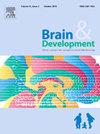Clinical features and prognostic factors of group B Streptococcus Meningitis in infants
IF 1.3
4区 医学
Q4 CLINICAL NEUROLOGY
引用次数: 0
Abstract
Purpose
To summarize the clinical features of group B streptococcus (GBS) meningitis in infants and identify the risk factors for poor prognosis.
Methods
The clinical data of 52 infants with GBS meningitis treated at Children's Hospital of Chongqing Medical University from January 2012 to December 2021 were retrospectively analyzed.
Results
A total of 48 infants (48/52, 92.3 %) presented with symptom onset at ≤90 days of age. Among 52 patients, the most prevalent clinical manifestations were fever (98.1 %), altered mental status (84.6 %) and decreased appetite (63.5 %). Subdural effusion (30/52, 57.7 %) was the most common neurological complication. One patient (1.9 %) died from cerebral herniation. Positive blood culture alone was observed in 41 cases (78.8 %), isolated cerebrospinal fluid (CSF) culture positivity in 5 (9.6 %), and dual blood-CSF culture positivity in 6 (11.5 %). The median hospital stay was 33 days. The most frequently administered antibiotic regimens were vancomycin combined with carbapenems (18/52, 34.6 %) and vancomycin plus third-generation cephalosporins (15/52, 28.8 %). Univariate analysis indicated an association between glucocorticoid use and clinical outcomes; however, multivariate analysis yielded no statistically significant variables (P < 0.05).
Conclusions
GBS meningitis is most common in infants below 3 months. Both clinical manifestations and ancillary tests may be nonspecific, and definitive diagnosis relies on etiological confirmation. The risk of neurological complications is high.
婴儿B群链球菌脑膜炎的临床特点及预后因素
目的总结婴儿B群链球菌脑膜炎的临床特点,探讨其不良预后的危险因素。方法回顾性分析2012年1月至2021年12月重庆医科大学附属儿童医院收治的52例GBS脑膜炎患儿的临床资料。结果48例(48/52,92.3%)患儿在≤90日龄出现症状。52例患者中最常见的临床表现为发热(98.1%)、精神状态改变(84.6%)和食欲下降(63.5%)。硬膜下积液(30/52,57.7%)是最常见的神经系统并发症。1例(1.9%)死于脑疝。单血培养阳性41例(78.8%),脑脊液分离培养阳性5例(9.6%),双血培养阳性6例(11.5%)。平均住院时间为33天。使用最多的抗生素方案是万古霉素联合碳青霉烯类(18/52,34.6%)和万古霉素联合第三代头孢菌素(15/52,28.8%)。单因素分析表明糖皮质激素的使用与临床结果之间存在关联;然而,多变量分析没有发现有统计学意义的变量(P <;0.05)。结论sgs型脑膜炎以3个月以下婴儿最为常见。临床表现和辅助检查可能是非特异性的,最终诊断依赖于病因确认。神经系统并发症的风险很高。
本文章由计算机程序翻译,如有差异,请以英文原文为准。
求助全文
约1分钟内获得全文
求助全文
来源期刊

Brain & Development
医学-临床神经学
CiteScore
3.60
自引率
0.00%
发文量
153
审稿时长
50 days
期刊介绍:
Brain and Development (ISSN 0387-7604) is the Official Journal of the Japanese Society of Child Neurology, and is aimed to promote clinical child neurology and developmental neuroscience.
The journal is devoted to publishing Review Articles, Full Length Original Papers, Case Reports and Letters to the Editor in the field of Child Neurology and related sciences. Proceedings of meetings, and professional announcements will be published at the Editor''s discretion. Letters concerning articles published in Brain and Development and other relevant issues are also welcome.
 求助内容:
求助内容: 应助结果提醒方式:
应助结果提醒方式:


